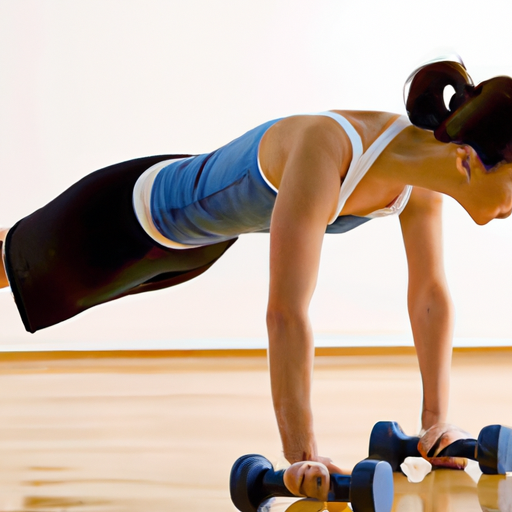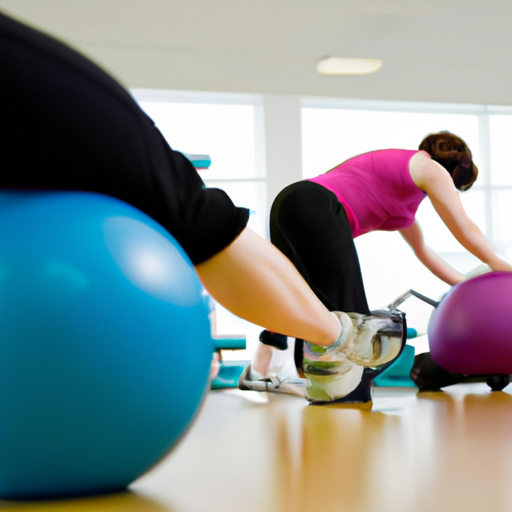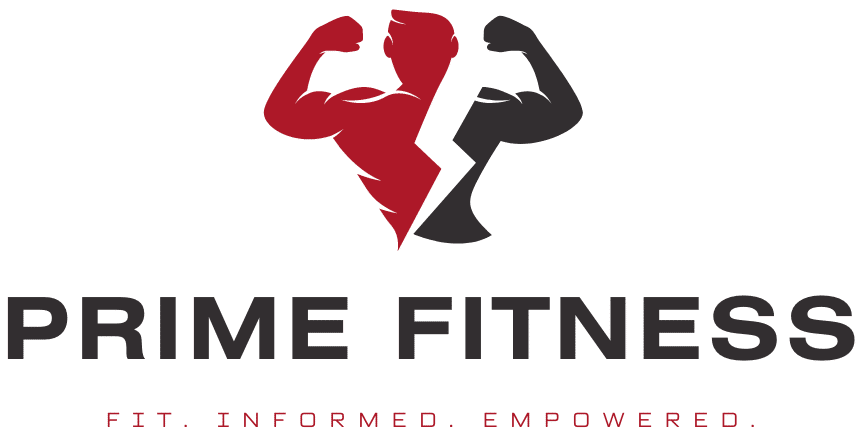In this article, you’ll learn about the importance of functional training and how it can prepare your body for real-life movements. We’ll explore what functional training is and how it differs from traditional fitness routines. You’ll also discover the benefits of functional training and how it can improve your overall strength, balance, and flexibility. By the end of this article, you’ll have a better understanding of functional training and why it’s a valuable addition to your fitness routine. Functional training is a type of exercise that focuses on preparing your body for the movements and activities performed in daily life. It involves training your muscles and joints to work together in a coordinated manner, emphasizing functional movements that mimic real-life activities such as lifting, bending, twisting, pushing, and pulling. This article will provide an overview of functional training, its benefits, key principles, types of exercises, how to implement it into your fitness routine, as well as equipment options, specific populations, and common mistakes to avoid. So let’s dive in and explore how functional training can help you improve your overall fitness and enhance your ability to perform everyday tasks.
Definition of Functional Training
Functional training refers to a structured approach to exercise that focuses on training movements rather than individual muscles. This type of training aims to improve functional ability, which is the capacity to perform everyday tasks efficiently and with reduced risk of injury. Unlike traditional strength training, which often isolates specific muscles, functional training emphasizes multi-joint, multi-plane movements that engage multiple muscle groups simultaneously. By training movements that closely resemble real-life activities, functional training can help you develop the strength, stability, and mobility required for various daily tasks and recreational activities.
Benefits of Functional Training
Functional training offers numerous benefits that extend far beyond the gym. Here are some of the key advantages of incorporating functional training into your fitness routine:
Improved Real-Life Movement Patterns
One of the primary benefits of functional training is its focus on movements that closely mirror real-life activities. By training movements that you encounter in your everyday life, such as squatting, bending, and lifting, you can enhance your ability to perform these tasks efficiently and with reduced risk of injury. Functional training helps your body become more efficient at the movements and postures you regularly encounter, making everyday activities easier and more comfortable to perform.
Increased Strength and Power
Functional training is an excellent way to build overall strength and power. By engaging multiple muscle groups simultaneously, functional exercises can challenge your muscles to work together in a coordinated manner, leading to functional strength gains that translate directly into improved performance in real-life activities. Whether you need to carry heavy bags of groceries, lift a suitcase into an overhead compartment, or move furniture around the house, functional training can help you increase your overall strength and power, making these tasks easier and more manageable.
Enhanced Balance and Stability
Maintaining good balance and stability is crucial for performing daily activities safely and effectively. Functional training incorporates exercises that target the muscles responsible for maintaining balance and stability, such as the core, hips, and ankles. By training these muscles in functional movement patterns and challenging them in various planes of motion, functional training can significantly improve your balance and stability, reducing your risk of falls and improving your overall movement confidence.
Injury Prevention
Functional training emphasizes proper movement mechanics and strengthens the muscles and connective tissues that support your joints. By improving your body’s ability to move efficiently and maintain optimal alignment, functional training can help prevent injuries both inside and outside of the gym. The increased muscle balance, stability, and mobility gained through functional training can reduce the risk of strains, sprains, and other common musculoskeletal injuries during daily activities and other forms of exercise.

Key Principles of Functional Training
To fully understand functional training, it’s important to grasp its key principles. These principles form the foundation of functional training and guide its design and implementation. Let’s take a look at the four key principles of functional training:
Multi-Planar Movements
In functional training, movements are performed in multiple planes of motion rather than just one. The three planes of motion are sagittal (forward and backward), frontal (side to side), and transverse (rotational). By incorporating exercises that challenge your body in different planes of motion, functional training helps you develop greater overall body strength, stability, and movement control.
Muscle Balance and Symmetry
Achieving muscle balance and symmetry is crucial for optimal function and movement. Functional training focuses on training all major muscle groups evenly to promote balance and prevent muscle imbalances, which can lead to overuse injuries and movement dysfunctions. By addressing muscle imbalances and ensuring that all muscles are functioning at their best, functional training can help improve movement efficiency and reduce the risk of injury.
Core Stability and Strength
A strong and stable core is essential for maintaining proper alignment, transferring forces effectively throughout the body, and preventing injuries. Functional training places significant emphasis on developing core stability and strength through exercises that challenge the deep and superficial muscles of the core, including the abdominals, obliques, and lower back muscles. By training the core in functional movement patterns, functional training enhances your ability to stabilize and control your spine during dynamic activities.
Integration of Different Muscle Groups
Functional training emphasizes the integration of different muscle groups to promote efficient movement patterns. Rather than isolating individual muscles, functional exercises involve the coordinated action of multiple muscles and joints to perform a specific movement or task. This integrated approach to training not only enhances overall strength but also improves movement efficiency, as muscles and joints are trained to work together in a coordinated manner.
Types of Functional Training Exercises
Functional training encompasses a wide range of exercises that target various movement patterns and muscle groups. Here are some common types of functional training exercises:
Compound Movements
Compound movements are exercises that involve multiple muscle groups and joints working together to perform a movement or task. Examples of compound movements include squats, lunges, deadlifts, push-ups, pull-ups, and overhead presses. These exercises mimic real-life movements such as lifting, pushing, and pulling and are highly effective for building overall strength and functional fitness.
Balance and Stability Exercises
Improving balance and stability is a key aspect of functional training. Balance exercises challenge your ability to maintain stability while performing movements on an unstable surface or in challenging positions. Examples of balance exercises include single-leg balances, single-leg squats, and yoga poses like Tree Pose and Warrior III. By training your body to stabilize in different positions, functional training can enhance your balance and stability in real-life activities.
Functional Strength Training
Functional strength training involves performing exercises that specifically target the muscles used in everyday activities. These exercises often involve movements that mimic real-life tasks, such as picking up objects from the ground, carrying heavy loads, or pushing and pulling objects. Functional strength training can be performed using a variety of equipment, including free weights, resistance bands, and weight machines.
Power Training
Power training focuses on developing explosive strength and speed, which are essential for quick and powerful movements. Plyometric exercises, such as box jumps, medicine ball throws, and explosive push-ups, are commonly used in power training. By enhancing your ability to generate force quickly, power training can improve your performance in activities that require explosive movements, such as jumping, sprinting, and throwing.

Implementing Functional Training into Your Fitness Routine
Now that you understand the principles and types of functional training, let’s explore how you can implement it into your fitness routine. Here are the key steps to follow:
Assessing Your Current Fitness Level
Before starting any new exercise program, it’s important to assess your current fitness level. This will help you identify any areas of weakness or limitations that need to be addressed through functional training. You can assess your fitness level by performing basic functional movements, such as squats, lunges, and push-ups, and noting any difficulties or limitations you encounter.
Setting Functional Training Goals
Once you’ve assessed your fitness level, it’s time to set specific goals for your functional training program. Your goals could be related to improving strength, increasing flexibility, enhancing balance and stability, or preparing for a specific sport or activity. Setting clear and measurable goals will help you stay motivated and track your progress throughout your functional training journey.
Choosing the Right Exercises for You
Based on your goals and fitness level, you can select the appropriate exercises for your functional training program. Consider incorporating a variety of compound movements, balance and stability exercises, functional strength training, and power training exercises. Start with exercises that challenge you but are still within your abilities, gradually increasing the difficulty and intensity as you progress.
Progressive Overload and Periodization
To continue making progress with your functional training, it’s important to incorporate progressive overload and periodization into your program. Progressive overload involves gradually increasing the demands placed on your body over time, whether it’s by increasing the weight lifted, the number of repetitions performed, or the difficulty of the exercise. Periodization involves dividing your training into different phases or cycles, each with a specific focus or goal. This approach allows for variation in intensity, volume, and exercises to prevent plateaus and optimize performance.
Benefits of Functional Training
We’ve already covered some of the benefits of functional training, but let’s summarize them briefly:
Improved Real-Life Movement Patterns
Functional training focuses on movements that closely mimic real-life activities, helping you perform daily tasks more efficiently and reducing the risk of injury.
Increased Strength and Power
By engaging multiple muscle groups simultaneously, functional training helps build overall strength and power, making activities like lifting, carrying, and pushing easier and more manageable.
Enhanced Balance and Stability
Functional training incorporates exercises that target the muscles responsible for maintaining balance and stability, improving your overall balance and reducing the risk of falls.
Injury Prevention
By improving movement mechanics, muscle balance, stability, and mobility, functional training can help prevent injuries during both everyday activities and other forms of exercise.

Functional Training Equipment
Functional training can be performed using various types of equipment or just your body weight. Here are some common equipment options:
Bodyweight Exercises
Exercises that use only your body weight as resistance, such as squats, push-ups, and planks, are effective for functional training and can be performed anywhere, without the need for equipment.
Resistance Bands
Resistance bands are versatile pieces of equipment that provide resistance in multiple directions. They can be used to strengthen various muscle groups and add variety and challenge to your functional training exercises.
Medicine Balls
Medicine balls are weighted balls that can be used to add resistance and challenge to functional movement patterns. They can be used for exercises like medicine ball slams, rotational throws, and overhead presses.
Suspension Trainers
Suspension trainers, such as TRX, are portable training systems that use your body weight and gravity as resistance. They can be attached to a door, bar, or tree and provide an effective full-body workout that targets multiple muscle groups.
Functional Training for Different Populations
Functional training can benefit a wide range of populations, including athletes, older adults, individuals recovering from injury, and pregnant or postpartum women.
Athletes and Sports Performance
Functional training can enhance athletic performance by improving strength, power, agility, and coordination. Athletes can use functional training exercises that specifically mimic the movements and demands of their sport to improve sport-specific skills and reduce the risk of injuries.
Older Adults
Functional training is particularly beneficial for older adults, as it can help improve balance, stability, strength, and mobility, reducing the risk of falls and maintaining independence in daily activities.
Post-Injury Rehabilitation
Functional training can play a crucial role in the rehabilitation process following an injury or surgery. By focusing on functional movements and addressing muscle imbalances and movement dysfunctions, functional training can help restore optimal movement patterns and facilitate the recovery process.
Pregnancy and Postpartum
Functional training can be adapted to meet the changing needs of pregnant and postpartum women. It can help strengthen the core and pelvic floor, maintain overall strength and stability, and prepare the body for the physical demands of pregnancy, childbirth, and caring for a newborn.

Common Mistakes to Avoid
To get the most out of your functional training, it’s important to avoid common mistakes that can hinder your progress and increase the risk of injury. Here are some mistakes to watch out for:
Neglecting Proper Form and Technique
Proper form and technique are essential for effective and safe functional training. It’s important to learn and practice proper body mechanics for each exercise to ensure that you’re engaging the correct muscles and minimizing the risk of injury.
Not Progressing Gradually
Functional training should be progressive, with exercises and intensity gradually increasing over time. Failing to progress gradually can lead to plateaus, overtraining, and increased risk of injury. Start with exercises that challenge you but are still within your capabilities, and gradually increase the difficulty as you get stronger and more proficient.
Overemphasis on Heavy Weights
While using heavy weights can be beneficial for strength development, it’s important to maintain a balance between heavy resistance and functional movements. Functional training focuses on improving movement patterns and overall functional fitness, so it’s crucial to incorporate exercises that mimic real-life movements and challenge your body in multiple planes of motion.
Ignoring Balance and Core Training
Balance and core training are vital components of functional training that should not be overlooked. Neglecting these aspects can hinder your overall functional fitness and increase the risk of injury. Make sure to include exercises that target the core and challenge your balance and stability regularly in your functional training program.
Sample Functional Training Workout Routine
To give you an idea of how a functional training workout may be structured, here’s a sample routine:
Warm-up and Dynamic Stretches
Start your workout with a 5-10 minute warm-up, including light aerobic exercise and dynamic stretches that target the major muscle groups and joints.
Compound Movement Circuit
Perform a circuit of compound movements such as squats, lunges, push-ups, rows, and overhead presses. Aim for 2-3 sets of 8-12 repetitions of each exercise.
Stability and Balance Exercises
Incorporate exercises that challenge your balance and stability, such as single-leg balances, stability ball exercises, or standing on an unstable surface. Perform 2-3 sets of 30-60 seconds for each exercise.
Core Strengthening Circuit
Include exercises that target the core, such as planks, Russian twists, and bird dogs. Perform 2-3 sets of 10-15 repetitions or hold for 30-60 seconds for each exercise.
Cool Down and Stretching
Finish your workout with a cool-down consisting of light aerobic exercise and static stretches for the major muscle groups.

Conclusion
Functional training is an effective and practical approach to exercise that can help you prepare your body for real-life movements and activities. By focusing on movements that mimic daily tasks and incorporating exercises that challenge multiple muscle groups and movement patterns, functional training offers numerous benefits such as improved real-life movement patterns, increased strength and power, enhanced balance and stability, and injury prevention. By implementing functional training into your fitness routine and following the key principles, choosing the right exercises, and avoiding common mistakes, you can enjoy the benefits and continued growth and adaptation for real-life movements. So start incorporating functional training into your workouts today and experience the positive impact it can have on your overall fitness and wellbeing.





